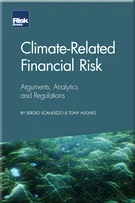Economic capital
Economic capital
Introduction
Value-based management
The risk management and capital management frameworks
Credit risk measurement and management
Market risk measurement and management
Property and casualty insurance risk measurement and management
Life insurance risk measurement and management
Operational risk measurement and management
Economic capital
Regulation and regulatory capital
Ratings and rating agency capital
Conclusion: looking backwards and forwards
Acknowledgements
Glossary
9.1 INTRODUCTION
The concept of economic capital was first introduced by Bankers Trust in the 1970s (Guill 2009, 2016; Herring et al 2010, p. 347; Sanford and Borge 1994). In order to measure the absolute and relative performance of different business units or products or specific transactions and to support a more optimal capital allocation process, Bankers Trust introduced the concept of risk-adjusted return on capital (RAROC). The numerator of the RAROC is the expected return (for ex ante measurement) or actual return (for ex post measurement) and the denominator is the risk capital or economic capital consumed by the business unit, product or transaction.
There are a number of important differences between economic capital (discussed in this chapter), regulatory capital (discussed in Chapter 10) and rating agency capital (discussed in Chapter 11). First, economic capital is developed by a financial institution using a combination of market and industry data and its own historical experiences, and it reflects more accurately the institution’s specific risks and exposures, rather than those being imposed by external parties (as is the case for regulatory capital or rating agency
Copyright Infopro Digital Limited. All rights reserved.
As outlined in our terms and conditions, https://www.infopro-digital.com/terms-and-conditions/subscriptions/ (point 2.4), printing is limited to a single copy.
If you would like to purchase additional rights please email info@risk.net
Copyright Infopro Digital Limited. All rights reserved.
You may share this content using our article tools. As outlined in our terms and conditions, https://www.infopro-digital.com/terms-and-conditions/subscriptions/ (clause 2.4), an Authorised User may only make one copy of the materials for their own personal use. You must also comply with the restrictions in clause 2.5.
If you would like to purchase additional rights please email info@risk.net










